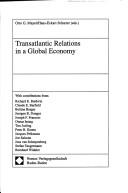| Listing 1 - 10 of 1206 | << page >> |
Sort by
|
Periodical
Abstract | Keywords | Export | Availability | Bookmark
 Loading...
Loading...Choose an application
- Reference Manager
- EndNote
- RefWorks (Direct export to RefWorks)
Le financement est essentiel pour le commerce international et les agences mondiales officielles de crédits d'export jouent un rôle primordial en fournissant des prêts, des garanties et des assurances. Le périodique Les systèmes de financement des crédits à l'exportation dans les pays membres et les économies non membres de l'OCDE propose des rapports par pays décrivant les crédits d'export officiels les pays membres de l'OCDE et des économies non membres. Pris ensemble, ces systèmes représentent l'écrasante majorité de crédit à l'exportation de l'appui fourni par les gouvernements au niveau mondial. Les rapports par pays sont mis à jour de temps en temps.
Book
ISBN: 2708123017 Year: 1999 Publisher: Paris Editions d'organisation
Abstract | Keywords | Export | Availability | Bookmark
 Loading...
Loading...Choose an application
- Reference Manager
- EndNote
- RefWorks (Direct export to RefWorks)

ISBN: 3789059358 Year: 1999 Publisher: Baden-Baden : Nomos,
Abstract | Keywords | Export | Availability | Bookmark
 Loading...
Loading...Choose an application
- Reference Manager
- EndNote
- RefWorks (Direct export to RefWorks)
Free trade --- Free trade
Book
Year: 1999 Publisher: Brussel
Abstract | Keywords | Export | Availability | Bookmark
 Loading...
Loading...Choose an application
- Reference Manager
- EndNote
- RefWorks (Direct export to RefWorks)

ISBN: 185898971X Year: 1999 Publisher: Cheltenham Elgar
Abstract | Keywords | Export | Availability | Bookmark
 Loading...
Loading...Choose an application
- Reference Manager
- EndNote
- RefWorks (Direct export to RefWorks)
Book
Year: 1999 Publisher: Paris Université de Paris 1 Panthéon-Sorbonne
Abstract | Keywords | Export | Availability | Bookmark
 Loading...
Loading...Choose an application
- Reference Manager
- EndNote
- RefWorks (Direct export to RefWorks)

ISBN: 0030223784 Year: 1999 Publisher: Fort Worth, Tex. Dryden
Abstract | Keywords | Export | Availability | Bookmark
 Loading...
Loading...Choose an application
- Reference Manager
- EndNote
- RefWorks (Direct export to RefWorks)
Periodical
Year: 1999 Publisher: Antwerpen
Abstract | Keywords | Export | Availability | Bookmark
 Loading...
Loading...Choose an application
- Reference Manager
- EndNote
- RefWorks (Direct export to RefWorks)
Book
Abstract | Keywords | Export | Availability | Bookmark
 Loading...
Loading...Choose an application
- Reference Manager
- EndNote
- RefWorks (Direct export to RefWorks)
February 1997 The developing countries that began trading more openly in the 1980s did so incrementally-shock therapy was uncommon. Asian countries led in trade reform and openness, so their export-led growth performance was not surprising. African countries trailed in reform and have still not become as open as other countries. Developing countries experienced a revolution in trade policy in the 1980s and 1990s, but it is unclear how much real openness increased. After all, they had started with multiple, often redundant, trade restrictions. And it is unclear how changes in openness should be measured. The most appropriate measure of openness is based on imports of consumer goods, argue Andriamananjara and Nash, since these imports commonly face the biggest trade barriers. After developing several such measures, including a measure of the change in tariff equivalent protection, they explore the recent evolution of trade policy, using readily available trade data. Openness has developed incrementally rather than overnight. In the early stages of adjustment, barriers to imports tended not to be reduced much. At first, the net reduction of incentives to produce import substitutes was minor, especially when currency depreciation is considered. Recently import barriers have been reduced more substantially, and since there has been little currency depreciation, incentives to produce import substitutes have declined. Shock therapy was uncommon. A few countries moved quickly to eliminate nontariff barriers to imports and to adopt low, fairly uniform tariffs. But most countries tended to peel away redundant layers of trade barriers, one at a time. They usually began with the barriers embodied in rationing and exchange controls, proceeded to nontariff measures, and finally reduced tariffs. Each step may have reduced protection a bit but the big reductions apparently came only in later stages. Still, even gradual reform helped open up those economies. The Asian countries tended to be most open both early and late. They were also above-average in reform efforts, by some measures, so their strong growth performance (based on exports) was unsurprising. The African countries, whose trade policies were probably worst to begin with, made relatively modest progress initially. In recent years their progress has been substantial; whether they have improved as much as other countries depends on which measure is used. Countries tied to the French franc (for whom real devaluation was more difficult) showed less progress than nonfranc countries, illustrating the importance of the connection between devaluation and trade reform. There is no evidence that rapid trade reform resulted in Africa's de-industrialization. This paper - a product of the International Trade Division, International Economics Department - is part of a larger effort in the Department to evaluate the effects of structural adjustment, with special focus on African economies.
Book
ISBN: 1280006307 9786610006304 0585217688 Year: 1999 Publisher: [Place of publication not identified] World Bank Publications
Abstract | Keywords | Export | Availability | Bookmark
 Loading...
Loading...Choose an application
- Reference Manager
- EndNote
- RefWorks (Direct export to RefWorks)
TradeCAN is designed to analyze international, national, and regional competitiveness in commodities and manufactured exports. It allows users to calculate market shares for each three or four digit SITC export for 1985-1996 and record changes in market share and market structure.
| Listing 1 - 10 of 1206 | << page >> |
Sort by
|

 Search
Search Feedback
Feedback About
About Help
Help News
News